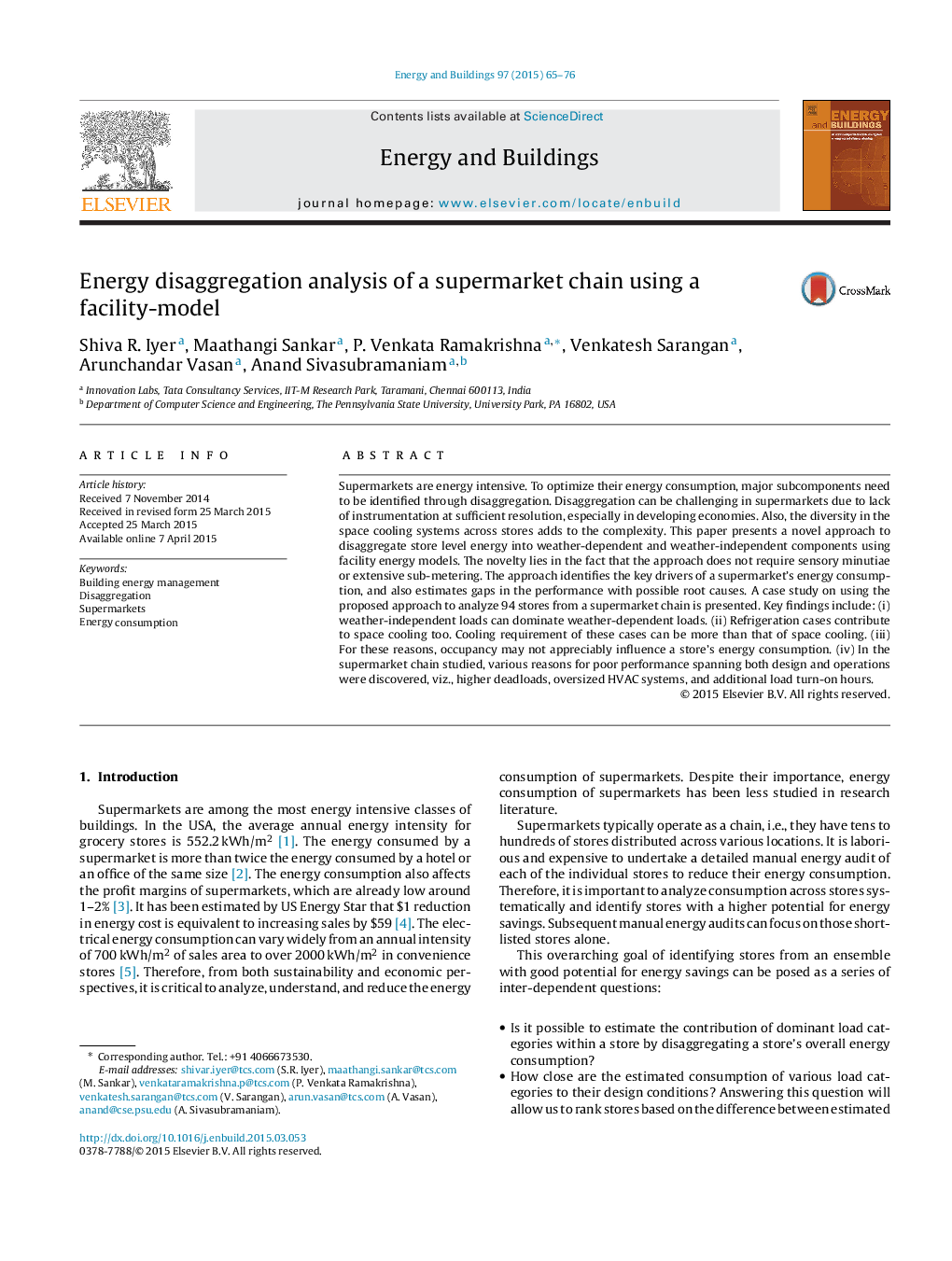| کد مقاله | کد نشریه | سال انتشار | مقاله انگلیسی | نسخه تمام متن |
|---|---|---|---|---|
| 262470 | 504034 | 2015 | 12 صفحه PDF | دانلود رایگان |
• A building's energy use consists of weather dependent and independent components.
• Proposed methodology disaggregates energy use into these categories using limited data.
• The methodology is used in a supermarket chain and analyzed various drivers.
• Stores with poor performance are identified along with possible causes (design/operational).
• Methodology is generic, can be utilized for other building types (retails/hospitals/hotels).
Supermarkets are energy intensive. To optimize their energy consumption, major subcomponents need to be identified through disaggregation. Disaggregation can be challenging in supermarkets due to lack of instrumentation at sufficient resolution, especially in developing economies. Also, the diversity in the space cooling systems across stores adds to the complexity. This paper presents a novel approach to disaggregate store level energy into weather-dependent and weather-independent components using facility energy models. The novelty lies in the fact that the approach does not require sensory minutiae or extensive sub-metering. The approach identifies the key drivers of a supermarket's energy consumption, and also estimates gaps in the performance with possible root causes. A case study on using the proposed approach to analyze 94 stores from a supermarket chain is presented. Key findings include: (i) weather-independent loads can dominate weather-dependent loads. (ii) Refrigeration cases contribute to space cooling too. Cooling requirement of these cases can be more than that of space cooling. (iii) For these reasons, occupancy may not appreciably influence a store's energy consumption. (iv) In the supermarket chain studied, various reasons for poor performance spanning both design and operations were discovered, viz., higher deadloads, oversized HVAC systems, and additional load turn-on hours.
Journal: Energy and Buildings - Volume 97, 15 June 2015, Pages 65–76
